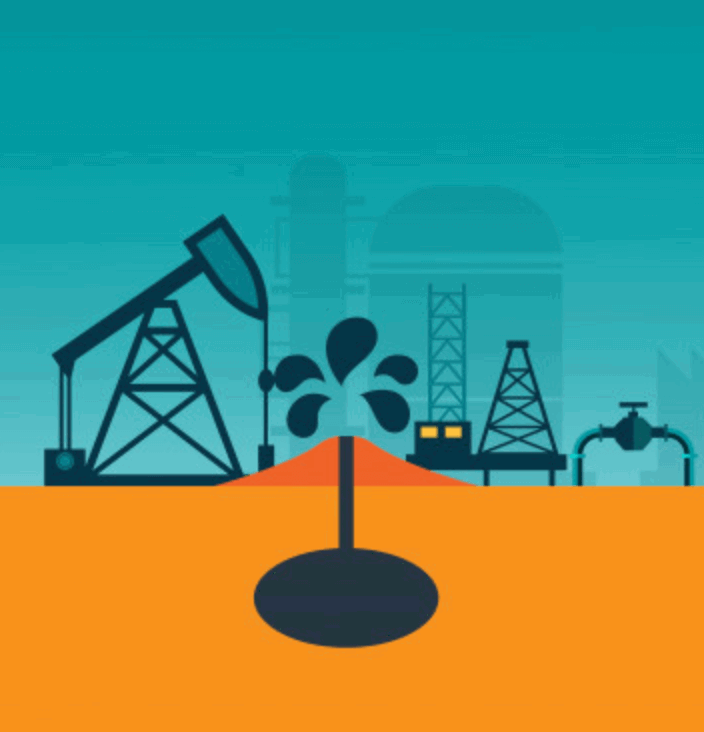Non- renewable energy

Image created by macrovector_official - www.freepik.com
Have you ever watched a windmill moving the sails with the help of the wind? As long as the wind blows, the sails move. We never run out of wind, so wind is a renewable source of energy. There are other forms of energy that can run out. that's why we call them non-renewable energy. Non-renewable energy sources can take millions of years to form, so once they are used, they can't be replaced in a lifetime.
Types of non-renewable energy
There are four main types of non-renewable energy sources, which we'll look at here one at a time.
1. Oil
Oil is a liquid that is pumped out of the ground. It can then be purified and turned into gasoline or diesel fuel for vehicles, or heating oil to warm your house. Oil is a very useful substance. Items that you use everyday are made out of it, like plastic bags, paint, soaps, and crayons.
2. Natural Gas
Natural gas is a gas that can be pulled out of the ground; it can be used for cooking or heating or be converted to electricity to power your computer.
3. Oil and Uranium
Coal and uranium are mined from the ground. Coal is a black rock that can be burned to generate electricity. Uranium is a non-renewable element found in certain rocks. It's the energy source used in nuclear power plants to produce electricity.
However, the use of non-renewable sources comes with many disadvantages.
1. Non-renewable energies lead to high levels of pollution.
Only the fossil fuels we consume represent one third of the global greenhouse gas emissions released each year.
2. Fossil fuels may not be available forever.
For the past 30 years the estimates for fossil fuel availability have been changing consistently. However, there is always a possibility that non-renewable resources could become unavailable in the future.
3. Fossil fuel combustion is dangerous to our health.
When coal fuels burn, they release very small particles into the atmosphere unless a filter captures them. These small particles increase the risk of cancer, heart attacks, and strokes when people are exposed to them.
4. It is too cheap for us to walk away from this resource.
We have spent more than 100 years developing the technologies and tools needed to consume fossil fuels in meaningful ways, making is quite cheap to use. Trying to make a switch to something that is more expensive than non-renewable energy is not feasible in some countries right now.
The advantages and disadvantages of non-renewable energy are pushing us toward sustainable ways to create the power we need. We know that climate change, cost, and availability are all factors that contribute to a push toward something that is cleaner and works for everyone.
Written by Sofia
Information from https://greengarageblog.org/21-advantages-and-disadvantages-of-non-renewable-energy and https://study.com/academy/lesson/non-renewable-energy-facts-lesson-for-kids.html